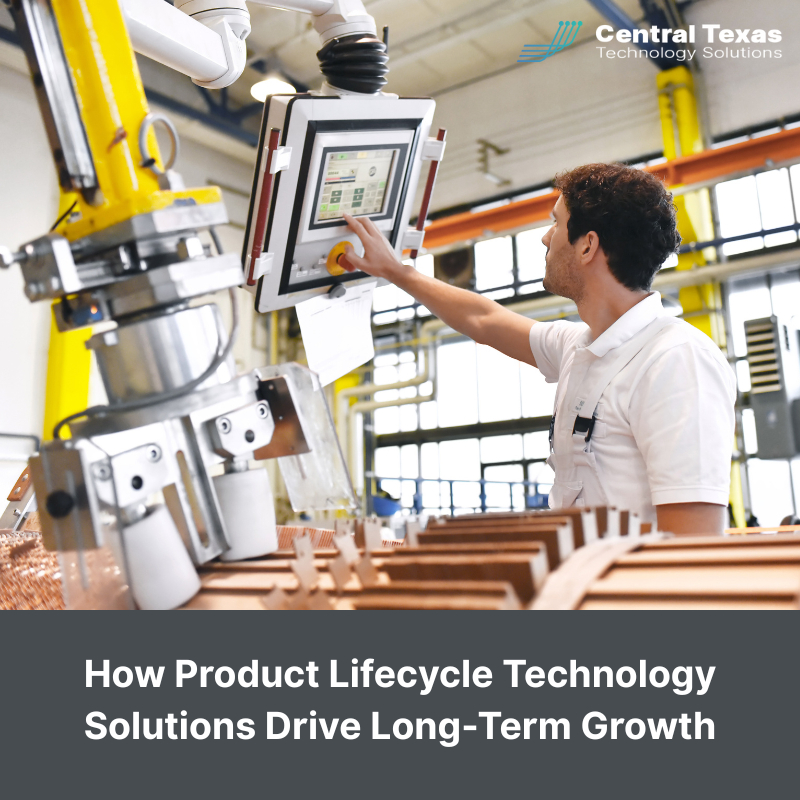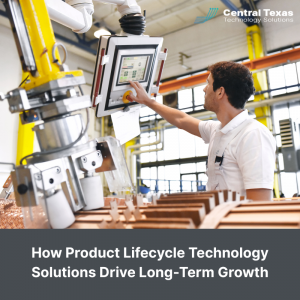
 In today’s competitive market, products can lose their value faster than ever. Many businesses struggle to maintain profitability as products wear out, become obsolete, or fail to adapt to shifting customer demands. This challenge isn’t just about operations. It’s about staying ahead of market pressure, protecting margins, and maximizing the value of every investment.
In today’s competitive market, products can lose their value faster than ever. Many businesses struggle to maintain profitability as products wear out, become obsolete, or fail to adapt to shifting customer demands. This challenge isn’t just about operations. It’s about staying ahead of market pressure, protecting margins, and maximizing the value of every investment.
Forward-thinking business leaders are turning to product lifecycle technology solutions to extend the life of their products, lower operational costs, and drive sustainable growth. When technology is strategically integrated across the product lifecycle, it unlocks new opportunities for efficiency, innovation, and profitability.
Why Product Lifecycle Technology Solutions Matter
Every product follows a natural journey, from concept to retirement. But with the right digital strategies, that journey can be smarter and far more profitable. Product lifecycle management connects people, processes, and technology to ensure that products generate the maximum possible value at every stage.
When done well, it allows organizations to:
- Reduce the costs of developing and producing new products
- Improve product quality and customer satisfaction
- Maximize resource utilization
- Enhance profitability and sustainability over time
For industries like Healthcare, Legal, Professional Services, Construction, Manufacturing, and Nonprofits, this isn’t just an operational improvement. It’s a strategic advantage.
How Data Powers Smarter Product Lifecycles
In the past, teams had to manually gather and verify data from different departments. This made product lifecycle management slow and error-prone. Today, digital systems transform that process into a streamlined, accurate, and highly valuable engine for insight.
By analyzing performance and wear throughout a product’s lifespan, businesses can make informed decisions in areas such as:
- Rental: Identify usage patterns to determine opportunities for rental and revenue extension.
- Reuse: Evaluate which components remain functional to reduce waste and improve ROI.
- Refurbishment: Extend the usability of assets through predictive testing and smart maintenance.
- Recycling: Find opportunities to recover value even at the end of a product’s life.
These insights help companies move away from a traditional linear model and embrace a more efficient, circular economy approach.
Lifecycle Extension Through Smart Technology Integration
The key to effective product lifecycle technology solutions lies in selecting the right tools and aligning them with your workflow. Here are three powerful technologies transforming how businesses manage their products:
Internet of Things (IoT)
An IoT network connects devices, sensors, and systems to share data seamlessly. Instead of forcing teams to work in silos, IoT creates a single, integrated environment where information flows in real time.
For example, a manufacturing facility can have weaving, dyeing, and finishing systems communicating instantly to improve quality, reduce downtime, and extend the lifespan of equipment and materials.
Smart Sensors
Modern sensors do more than track temperature and pressure. Advanced models provide critical operational insights, including:
- Component wear levels to trigger timely servicing, reuse, or recycling
- Quality control metrics to maintain consistent production standards
- Machine performance trends for predictive maintenance and reduced obsolescence
These insights allow leaders to make proactive decisions instead of reacting to breakdowns.
Artificial Intelligence (AI)
AI turns massive amounts of raw data into clear, actionable intelligence. Machine learning models can analyze patterns, identify trends, and predict maintenance or upgrade needs with precision.
This reduces reliance on manual analysis, speeds up decision-making, and empowers leaders to make strategic moves that strengthen long-term product performance.
Maximizing Value with Product Lifecycle Technology Solutions
When businesses adopt technology designed to extend product lifecycles, they do more than save money. They future-proof their operations, create better customer experiences, and position themselves as leaders in their industries.
The benefits are clear:
- Lower costs through smarter use of assets and materials
- Increased revenue from extended product value and reduced waste
- Greater agility to adapt to changing market demands
- Improved sustainability to meet customer and regulatory expectations
These advantages make a lasting difference in industries where product performance, reliability, and efficiency are critical to growth.
Why CTTS Is Your Partner of Choice
Implementing advanced lifecycle technology requires more than just tools. It demands strategy, integration, and ongoing support. At CTTS, we help businesses across Austin, Round Rock, Georgetown, and Central Texas align their operations with powerful product lifecycle technology solutions that deliver real results.
We bring expertise in infrastructure, cybersecurity, cloud technology, and workflow optimization to help leaders unlock value across their entire product ecosystem.
Frequently Asked Questions About Product Lifecycle Technology Solutions
1. How do product lifecycle technology solutions help lower costs?
They reduce expenses by improving maintenance schedules, minimizing waste, and extending product lifespan, which lowers the need for frequent replacements or redesigns.
2. What industries benefit the most from product lifecycle technology solutions?
Industries with high-value physical assets like Healthcare, Manufacturing, Construction, Legal, and Nonprofits can see significant gains in efficiency, resource use, and long-term profitability.
3. How long does it take to implement these solutions?
The timeline varies by organization size and complexity, but many businesses begin seeing measurable improvements in operational efficiency and cost reduction within the first few months.
Contact CTTS today for IT support and managed services in Austin, TX. Let us handle your IT so you can focus on growing your business. Visit CTTSonline.com or call us at (512) 388-5559 to get started!
